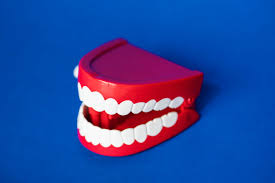1. Check out Your Veterinarian for Teeth Cleaning
Oral care for pet dogs and cats must start at your veterinarian’s office. Animals require to be regularly assessed for the existence of dental tartar and disease and be dealt with if needed. The truth is, about 80 percent of canines and 70 percent of cats over the age of 3 struggle with substantial oral disease that needs treatment. Such treatment might include a tooth or numerous teeth being pulled to stop infection and avoid extra health problems.
However your pet’s teeth don’t need to get to this point. When she goes to the veterinarian for her annual or six-month evaluation, the physician will inspect her teeth. She or he will be on the lookout for reddened gums, yellow-brown tartar and other indications of dental illness. The physician likewise may advise that your animal gets oral X-rays to check whether there are hidden indications of disease below the gum line and in the bones. Carrying out a full oral examination and taking X-rays need sedation, but it’s well worth it for the crucial information these procedures expose about your family pet’s oral health. If there is any evidence of oral illness, the vet will likely suggest an oral cleaning for your pet.
Much like in human medicine, a thorough oral cleaning includes cleaning your family pet’s teeth with a scaler and examining the gums for gum “pockets” (areas where the gums have pulled away from the teeth). However unlike individuals, cats and dogs do not lay still for their dentist. For that reason, oral cleansings are performed while animals are under basic anesthesia. Today’s animal anesthesia is exceptionally safe and, frequently, the health dangers of preventing dental cleansings far exceed the hazard of anesthesia complications.
On average, canines and felines benefit from oral cleaning once a year starting at the age of 3, however every animal needs his or her own individual dental program. Some felines and pet dogs might need less frequent cleanings, others more. Your veterinarian will work with you to choose what’s best for your family pet.
2. Brush Your Pet’s Teeth Every Day
Another essential part to staving off dental illness is at-home care. While it’s crucial to follow your veterinarian’s recommendations for getting your family pet’s teeth cleaned up in the center, the very best thing you can do to in your home to promote great oral health is to brush your animal’s teeth– day-to-day. Doing it every couple of days or as soon as a week isn’t enough, since the germs that cause oral illness can recolonize on the tooth surface area in a duration of 24 to 36 hours. Daily brushing may sound difficult, but it’s entirely doable, even on finicky cats.
Start with the basic tools: a soft-bristled tooth brush (preferably, one particularly for animals) or a finger brush and tooth paste. Make certain to use toothpaste specifically created for pets, because toothpaste for individuals is created to be spit out and can be harmfulto felines and dogs when swallowed.
Next, put a small amount of tooth paste on your finger and let your animal smell and lick it. If there’s positive interest in the flavor of the toothpaste, use it. If your pet isn’t interested in the tooth paste, it’s OKAY to brush her teeth without it (a number of tastes are offered, so you can always try a different one next time). Hold the tooth brush at a 45º angle to the tooth surface area with the bristles pointing toward the gums. Work the tooth brush in a circular movement, concentrating on the outside surfaces of the teeth– and do not forget the cheek teeth in the back. Go gradually, intending to invest a total of 30 seconds on each side of the mouth.
And be client. If you have not brushed your family pet’s teeth prior to, you may require to begin by simply getting your cat or canine used to having her mouth touched. Then you can gradually develop to longer brushing sessions. While a lot of animals ultimately can be accustomed to enjoying (or a minimum of not resisting) having their teeth brushed, some animals are more resistant than others.
3. Feed Your Pet an Unique Oral Diet if Advised
There are numerous business diet plans that have actually been revealed to improve your family pet’s periodontal health compared to regular dry food diets. These oral foods work by using a specialized kibble to provide better mechanical cleaning of the teeth. Ask your vet if a special oral diet is right for your pet.
